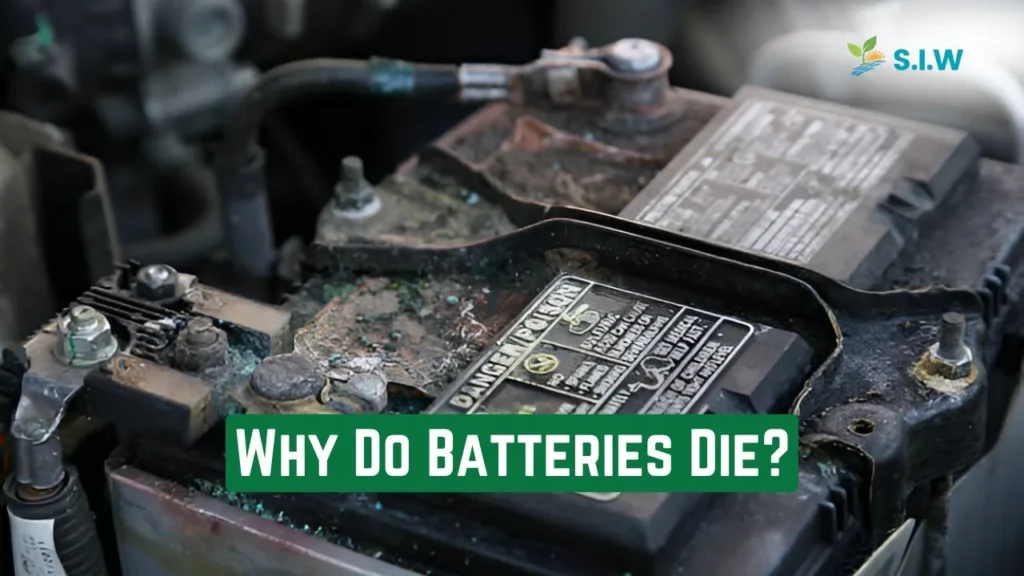Batteries play a crucial role in powering our modern devices, from smartphones to electric vehicles. Understanding why batteries die is essential for maximizing their lifespan and ensuring optimal performance. This article delves into the factors contributing to battery degradation, common types of batteries, and best practices to prolong battery life.
The Science Behind Battery Degradation
Batteries store electrical energy through chemical reactions, primarily using lithium-ion (Li-ion) technology in consumer electronics and electric vehicles. Over time, these chemical reactions can become less efficient, leading to battery degradation. Several factors influence how and when a battery may fail.
1. Chemical Aging
Batteries undergo chemical aging due to repeated charge and discharge cycles. Each cycle leads to the formation of solid electrolyte interphase (SEI) on the anode surface. This layer, while protective, consumes active lithium and reduces the battery’s capacity over time. Additionally, electrolyte decomposition can occur, generating gas and causing swelling or leaks, ultimately leading to battery failure.
2. Temperature Extremes
Temperature plays a pivotal role in battery health. High temperatures accelerate chemical reactions within the battery, leading to quicker degradation. Conversely, extremely low temperatures can slow down reactions, diminishing the battery’s performance. Most manufacturers recommend operating batteries within a specific temperature range (usually between 20°C to 25°C or 68°F to 77°F) to maximize lifespan.
3. Overcharging and Deep Discharging
Overcharging a battery can lead to thermal runaway, a condition where the battery overheats and potentially catches fire. Most modern batteries come equipped with protection circuits, but habitual overcharging can still cause damage over time. On the other hand, deep discharging (allowing a battery to drain completely) can also harm the battery, especially in lead-acid types, leading to sulfation—a process that permanently reduces capacity.
4. Charge Cycles and Depth of Discharge (DoD)
Every battery has a finite number of charge cycles it can withstand. A charge cycle consists of a full discharge followed by a full charge. However, it’s important to note that partial discharges can also contribute to battery aging. For instance, discharging a battery to 50% and recharging it counts as half a cycle. Keeping the depth of discharge shallow—ideally between 20% to 80%—can extend battery life significantly.
Types of Batteries and Their Lifespan
Understanding the type of battery you’re using can shed light on its lifespan and optimal care practices. Here’s a look at common battery types and their longevity:
1. Lithium-Ion Batteries
Lithium-ion batteries are ubiquitous in portable electronics and electric vehicles due to their high energy density and low self-discharge rates. They typically last 2 to 3 years or around 300 to 500 full charge cycles, depending on usage and care. Best practices include avoiding extreme temperatures, not allowing them to drain completely, and keeping them charged between 20% and 80%.
2. Nickel-Metal Hydride (NiMH) Batteries
NiMH batteries are commonly used in hybrid vehicles and some rechargeable consumer electronics. They are more robust than NiCd (Nickel-Cadmium) batteries but have a shorter lifespan compared to lithium-ion batteries. NiMH batteries can last 3 to 5 years with proper care, particularly when kept away from extreme temperatures and not completely drained before recharging.
3. Lead-Acid Batteries
Lead-acid batteries are frequently used in automotive applications and uninterruptible power supplies (UPS). They typically last 3 to 5 years, but their lifespan can be significantly shortened by deep discharging or prolonged periods of inactivity. Regular maintenance, such as checking electrolyte levels and keeping them fully charged, can help extend their life.
Best Practices for Prolonging Battery Life
Taking proactive steps to care for your batteries can significantly extend their lifespan. Here are some effective strategies:
1. Avoid Extreme Temperatures
Store and use batteries within the recommended temperature range. If you’re in a particularly hot or cold environment, consider temperature-regulating solutions, such as insulated cases for your devices.
2. Charge Smartly
Use the right charger for your device and avoid overnight charging if your device doesn’t have built-in overcharge protection. If possible, try to keep your battery between 20% and 80% charged to minimize stress.
3. Regular Use and Maintenance
For batteries that are not frequently used (such as in lawn equipment or seasonal gadgets), make sure to charge them regularly to prevent deep discharge. For lead-acid batteries, periodic maintenance checks are crucial to ensure longevity.
4. Avoid Complete Discharges
Frequent complete discharges can harm battery chemistry. Aim to recharge your battery when it reaches around 20% capacity, and unplug when it’s around 80-90% charged for optimal health.
5. Optimize Settings and Usage
In portable devices, optimizing settings (like screen brightness, background processes, and connectivity options) can help reduce power consumption and extend battery life.
Signs Your Battery May Be Failing
Recognizing the early signs of battery degradation can help you take action before complete failure. Common indicators include:
- Reduced Battery Life: If your device requires charging more frequently than before, it may be time to consider a replacement.
- Overheating: If your device gets excessively hot while charging or during use, it could indicate a failing battery.
- Physical Changes: Swelling, leakage, or any unusual physical deformation of the battery is a sign that it needs immediate attention.
- Erratic Performance: Devices experiencing unexpected shutdowns or inconsistent performance may be suffering from battery issues.








